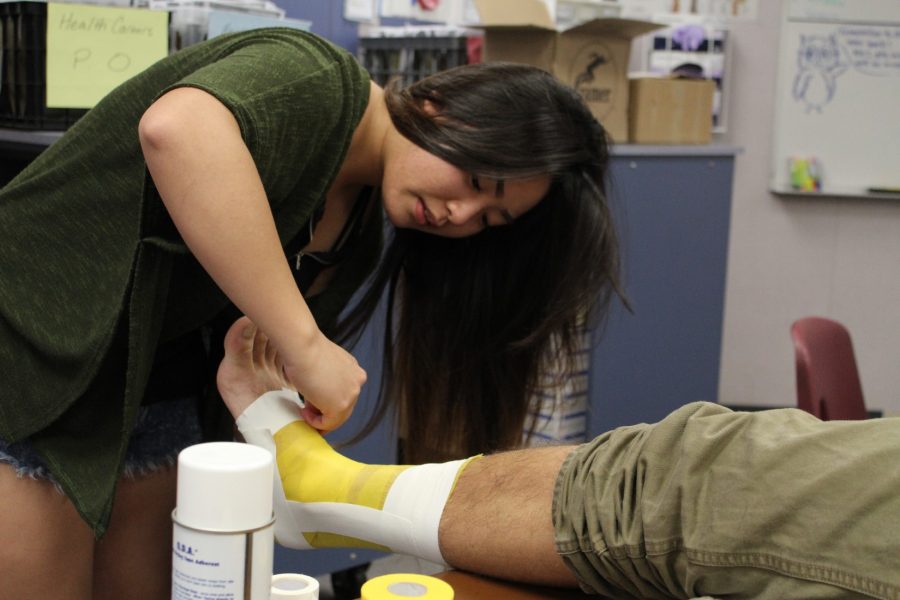Aiding athletes on the sidelines
Teaching about the body and how to care for injured players, Chase Paulson teaches a young group of students about sports medicine.
April 13, 2016
Sport games are a battle of physicality, with teams competing on the field and courts to come out on top. With so much emphasis placed on health for athletes, Diamond Bar High School Sports Physical Therapy class exists to educate students on the body and how it relates to those battling competitors.
DBHS teacher Chase Paulson started teaching sports medicine classes in 2012 since it aligned with his current job as an athletic trainer. He currently teaches Intro to Health/Intro to EMS and Sports Physical Therapy.
“During the course of the year, students are taught pieces of the puzzle, and the big reward if when students get the big picture and can take the information they’ve learned and understand the entire injury process,” Paulson said via email.
Junior Jasmin Eid decided to take the course because of her interest in the medical field and because she wanted to take a course that would be closely related to medicinal sciences.
During Sports Physical Therapy, students learn about the role of the athletic trainer on the sports medicine team, emergency action planning and sports nutrition.
They also perform several hands-on activities such as orthopedic evaluations, life saving skills, and handling injuries.
The hands-on activities were an aspect of the class that junior Timothy Huang was interested in. Working outside of a classroom setting was another reason Huang wanted to join the class. Students work with student-athletes during both practices and games under the supervision of college interns or a certified athletic trainer. Huang also said that taking the class would help him determine if he wanted to pursue a career a medical field in the future.
“I think my favorite part of the class is how I am able to apply things that I learn in class into the real world when I work with the athletes,” Huang said.
Students who participate in the training program work during the games to aid the athletes. Before games, students’ responsibilities include prepping water and first aid kits and observing the college interns and the certified athletic trainer while they perform different taping techniques. During the game, they help with minor injuries and keep the athletes hydrated.
Afterwards, these students clean the water jug, bottles, and treatment tables and assist the college interns and athletic trainer with after-care for the athletes including cryotherapy and electrical stimulation.
Senior Jarrett Hsieh thought that taking the course would help him since he is a catcher on the varsity baseball team. Hsieh believed that learning more about the body would help him better understand what was wrong whenever he was injured.
“Since the class is only eight students and the teacher, we are like a family,” Huang said. “We all have different personalities that make us unique and our conversations interesting.”









